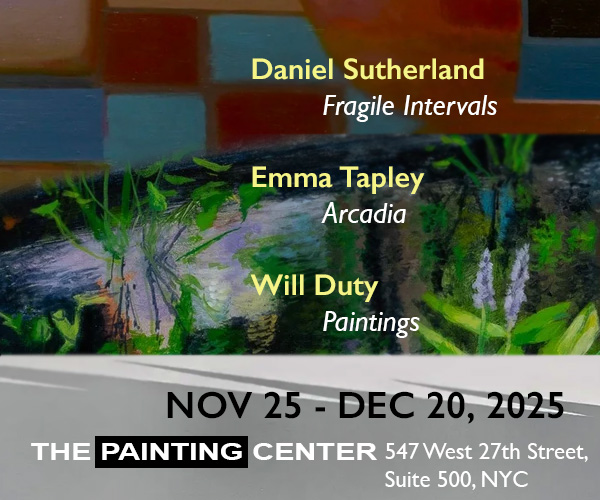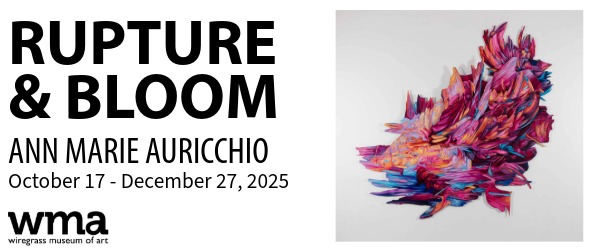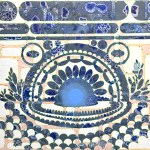“� Murakami,“curated by Paul Schimmel and organized by Mika Yoshitake. Geffen Contemporary at MOCA, Los Angeles, CA. October 29- Feb. 11.
Takashi Murakami, conflating the worlds of fine art and popular culture, is best known for the colorful cartoon-like imagery he dubs Superflat. In LA Weekly, Dani Katz takes a walk through the half-installed exhibition with curator Paul Schimmel. “The museum has denied press previews until now. As Schimmel guides me through, Schimmel notes adjustments that need to be made, support structures to switch out � endless details to worry about � all while a cacophony of clanking hammers and whirring power tools fills the background with white noise as MOCA staffers wearing laminated badges and the unmistakable sheen of exhaustion unpack shipping crates and erect plinths….Murakami doesn�t just toe the line between art and commerce; he�s built an empire upon it. Though easily reduced by some (and you know who you are) as just ‘more of that Japanese cartoon crap,’ what with the vapid smiling daisies and ubiquitous neon mushrooms, there�s too much behind his work to dismiss it with a superficial flick of the wrist � too much schooling and too many degrees, too much theory, too much thought, too many ‘posts’ and ‘isms’ around all those damn mushrooms…. ‘I thought, maybe it would be good for America, now living under war, to encounter this ultimate nihilism,’ says Murakami, referring to the Zen notion that there is no right or wrong, everything merely is.” Read more.
In the LA Times, Christopher Knight reports: “Fantastic myths and legends find contemporary form in candy-colored works whose forced cheerfulness can, in this colossal quantity, become wearing. Halfway through the show, when I entered a raucously floral-wallpapered room filled with floral paintings bursting with the same smiling flowers and dominated by a topiary sculpture whose flowery tendrils reached 13 feet into the air, my teeth began to hurt. Chuck E. Cheese for grown-ups, it’s a bit like eating a whole box of See’s candy for lunch. I suspect, though, that nausea is part of what Murakami is after. The demotic hysteria of commercial culture infects everything now, including once-sober political discourse. It’s our global patois.” Read more.
Bruce Wallace reports in the LA Times that “Murakami has never been shy about moving merchandise, and the volume is sustained by a cadre of artists at his company, Kaikai Kiki. But he remains a controversial figure in Japan. The idea of producing fine art as a collective project offended Japan’s insular art establishment. And there were plenty of cries of ‘sellout’in 2003 when Murakami took up Louis Vuitton designer Marc Jacobs’ offer to splash some colorful Superflat flowers and decoration onto the company’s famously brown bags. But Murakami has been single-minded about seeing art as an enterprise. His most recent book is called ‘The Theory of Art Entrepreneurship.’ He’s the artist as CEO.”
Wallace wonders if Murakami’s vision has passed its sell-by date. “Murakami’s art speaks to the sensibilities of the generation born in the 1960s, those who grew up with the reverberations of World War II’s disaster pulsing through the culture. They were raised on a media diet of anime and manga, with their anti-technology, antiwar story lines and themes. And they came of age in an era when Japan could throw up little more than Marxist jargon in resistance to the deluge of imported American culture. The inevitable question posed by a retrospective, however, is whether there still is life in Superflat. Does the style speak to the Japanese of the digital age, a generation largely ignorant about the cultural upheavals of the postwar period and that has economic anxieties unknown back then? Or is it a movement whose time is passing?”
In Coagula, Mat Gleason feels, er, strongly about the show. “By all means, go see the Murakami show – for it is certainly a spectacle, although it is NOT art – unless Disneyland, too, is art. If Disneyland is art, then MOCA is foolish to charge such a low admission. If Disneyland is art, its Alice in Wonderland and Winnie The Pooh rides utterly destroy the Murakami exhibition on every level – from their fantastic psychedelia to their paradox of childhood innocence broached by intimacy. But MOCA does have cleaner bathrooms than the Disney parks. After you have visited the Takashi Murakami show, this bombastic, empty plastic palace of sterile child abuse, caucasian humiliation and Hyper-capitalism making even Beijing envious, well you can say you saw it. And you can forever look MOCA director Jeremy Strick right in the eyes and call him a WHORE.”
Check out the video of Marc Jacobs, artistic director for Louis Vuitton, as he discusses his collaboration with Takashi Murakami. The exhibition features a fully operational Louis Vuitton boutique, which showcases the purses TM designed for LV.
Related posts:
The superslick, superflat, superexpensive paintings of Takashi Murakami






















